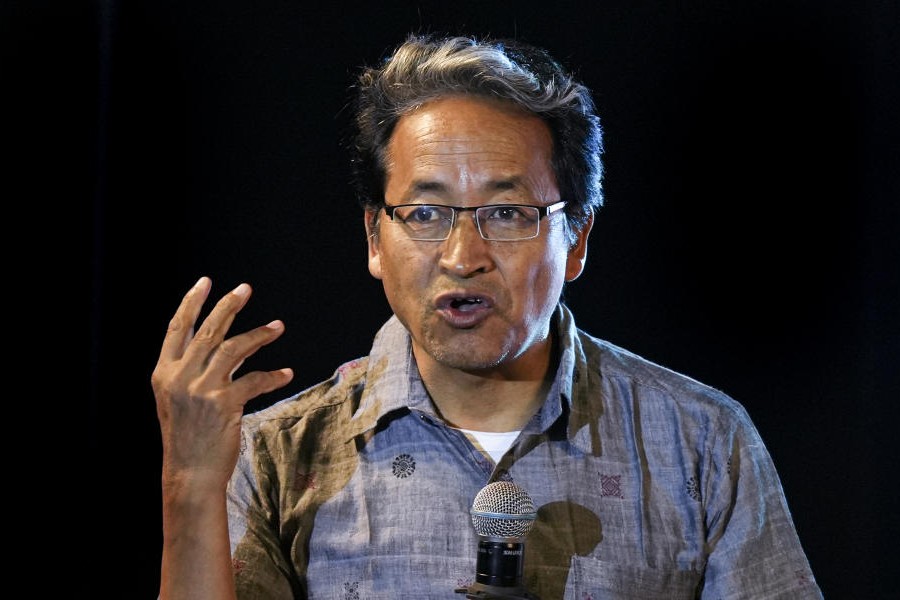Is Mandal politics on its deathbed? This is the question that many analysts have asked after the Bharatiya Janata Party routed the Samajwadi Party in the recent Uttar Pradesh elections. It was the fourth consecutive electoral drubbing for the SP at the hands of the BJP in the Narendra Modi era.
Mandal politics cannot defeat the BJP, and the SP needs to finally move beyond it, some astute and eminent commentators of Indian politics have suggested in the past few days. Characterizing Mandal politics as “falling stock”, the journalist, Vandita Mishra, wrote that “Mandal politics is now seen, in large sections of even its homeground, UP, as casteist and divisive.” In another piece titled “It’s curtains for Mandal politics now”, the columnist, Roshan Kishore, argued that since Mandal politics cannot create an inclusive civil society or advance a class-based agenda, it is “doomed to fail” against the BJP. The political philosopher, Pratap Bhanu Mehta, put down the failure of parties such
as the SP to relying excessively on “social arithmetic” rather than a “generative conception of politics”. “The project of now opposing any national party on the basis of a coalition of fragmented identities is dead,” wrote Mehta.
Yet, in the view of this author, the Mandal platform is still the most potent force against Hindutva in the heartland states of UP and Bihar. The time calls for a revamping of Mandal, not its renouncement.
Two pieces of preliminary evidence might be furnished to caution against sweeping pronouncements on the efficacy of Mandal politics as a counter-narrative to Hindutva.
One, the SP swept four districts in eastern UP where Mandal politics has traditionally been strong. They won all the 10 seats of Azamgarh, the seven seats of Ghazipur, the five seats of Ambedkarnagar, and the three seats of Kaushambi. Two, 43 per cent of voters told a Lokniti post-poll survey that they felt that the state government had only benefited the upper castes. The existence of this sentiment in the consciousness of large segments of voters is politically significant, even if it did not translate into votes.
Election results in a democracy can offer a deceptive signal. The mind-space of voters is a complex domain, subjected to the push and pull of the overlapping political registers of identities and ideas. The parties that win are usually those which manage to make the political registers favourable to them salient during an election. But it does not necessarily indicate the absence or the discrediting of other political registers.
The case for parties such as the SP to move beyond Mandal and opt for a more universal platform is two-fold.
One, the increasingly big-tent nature of political competition. In those states where the BJP is a prominent actor and the Muslim population is high, the polity is seen to be moving from a multipolar to a bipolar dynamic. The recent state elections in Bengal, Bihar and UP saw bipolar contests in most constituencies. Since bipolar competition drives up the threshold of winning elections to around 35-40 per cent of the vote share, it requires broad-based and inclusive platforms, not the narrow, caste-based politics of Mandal.
Two, the diminishing returns of caste-based politics among a supposedly new electorate, moved more by the social cleavages of religion and (increasingly) gender as well as governance claims of welfare and development. The success of the Aam Aadmi Party is provided as a model to be emulated — a caste agnostic party channelling the aspirations of the modern Indian electorate.
Both of these critiques seem valid if we assume that Mandal politics cannot move beyond its long phase of Muslim-Yadav mobilization. Granted, this election does reinforce the assumption. For all of Akhilesh Yadav’s rhetoric of ‘haq’ (due rights) and ‘hissedari’ (representation), for all the engineered exodus of non-Yadav backward caste leaders from the BJP to the SP on the eve of the election, the SP vote still mostly consisted of the Muslims and the Yadavs. The BJP had double the vote share of the SP among the backward caste of Kurmis, and almost three times the vote share among the most backward castes, according to Axis Survey data. The Dalits, meanwhile, were colder still towards the SP.
But this election should not be viewed as a referendum on the Mandal platform, constructed as it were in the space of an election campaign. As I wrote in a piece for The Hindu in January, Hindutva has laid claim to part of the Mandal space by becoming the vehicle for political assertion of smaller backward castes. These castes had felt marginalized under the umbrella of the traditional Mandal parties such as the SP and the Rashtriya Janata Dal, which primarily catered to the dominant backward caste of Yadavs. To win them back would require a fundamental ideological and organizational overhaul that takes place outside of election cycles. “... [I]deological renewal is a long-term project, and takes more than election speeches. It involves cultivating symbolic resources which can underpin solidarity and a shared consciousness among backward communities. It also requires a cadre-based organisation, led by backward castes, that can take the party’s ideological messaging to the ground,” I had written. “At present, the SP, with a party machinery singularly geared for fighting elections and acquiring power, is ill-suited to carry forward these ideological endeavours.”
The electoral failure of a political party does not necessarily mean a popular rebuke of its underlying ideology. It is worth remembering the intellectual discourse in the latter part of the 2000s when the BJP was going through a political slump. Many commentators argued that the BJP needed to move beyond Hindu nationalism to win over the bulk of the voters.
It was held that Hindutva only attracted 15-20 per cent of the electorate in states such as UP and, indeed, repelled a larger number. They provided electoral evidence to back up their argument. In the three state elections in UP between 2002-2012, the BJP’s vote share hovered between 15-20 per cent and the party was decisively relegated to the third place.
But did these electoral reversals mean that the vast majority of voters were indifferent or hostile to the BJP’s ideology of Hindu nationalism? Or was there a subterranean sympathy for majoritarian politics, but since the dominant motif in the electoral space was caste, the BJP’s Hindu pitch made little electoral headway? The performance of the BJP in the four elections in UP after 2012 certainly points to the latter explanation.
In 2004, the political scientist, Suhas Palshikar, had written an article for the Economic and Political Weekly titled “Majoritarian Middle Ground?” in which he pored over survey data and concluded that the middle ground of Indian politics was shifting towards the Right. The BJP’s defeat in the 2004 general elections was not a setback for majoritarianism, argued Palshikar because the election was fought on the governance record of the Atal Bihari Vajpayee government and not on the issue of secularism or communalism.
Even in this era of dominance, the BJP has not managed to break through in eastern and southern states where the Hindu identity of voters is superseded by other linguistic and cultural identities. In the states of the deep South — Kerala and Tamil Nadu — where subnational identities are moored to a vision of social justice, the BJP has struggled to even open its account in elections. Thus, the AAP’s spectacular rout of the BJP in Delhi (or indeed its triumph in Punjab) must not distract us from the fact that identity and social justice based appeals have been the surest counter to Hindutva. In fact, the BJP has been, by far, the most comfortable against the universalistic platform of the Congress.
Being out of power, the SP does not have the option of remaking its brand on a governance or welfare model like the AAP. What it does possess is the emotional resonance of caste-based appeals, and emotions still remain central to politics. The BJP has reinvented itself by exploiting caste, class and gender cleavages without diluting its Hindu identity. The SP, the party of Lohiaite socialism, with its intersectional theory of caste, class and gender oppression, can do so as well. Abdicating its Mandal platform would be akin to throwing the baby out with the bathwater.
Asim Ali is a political researcher and columnist based in Delhi











